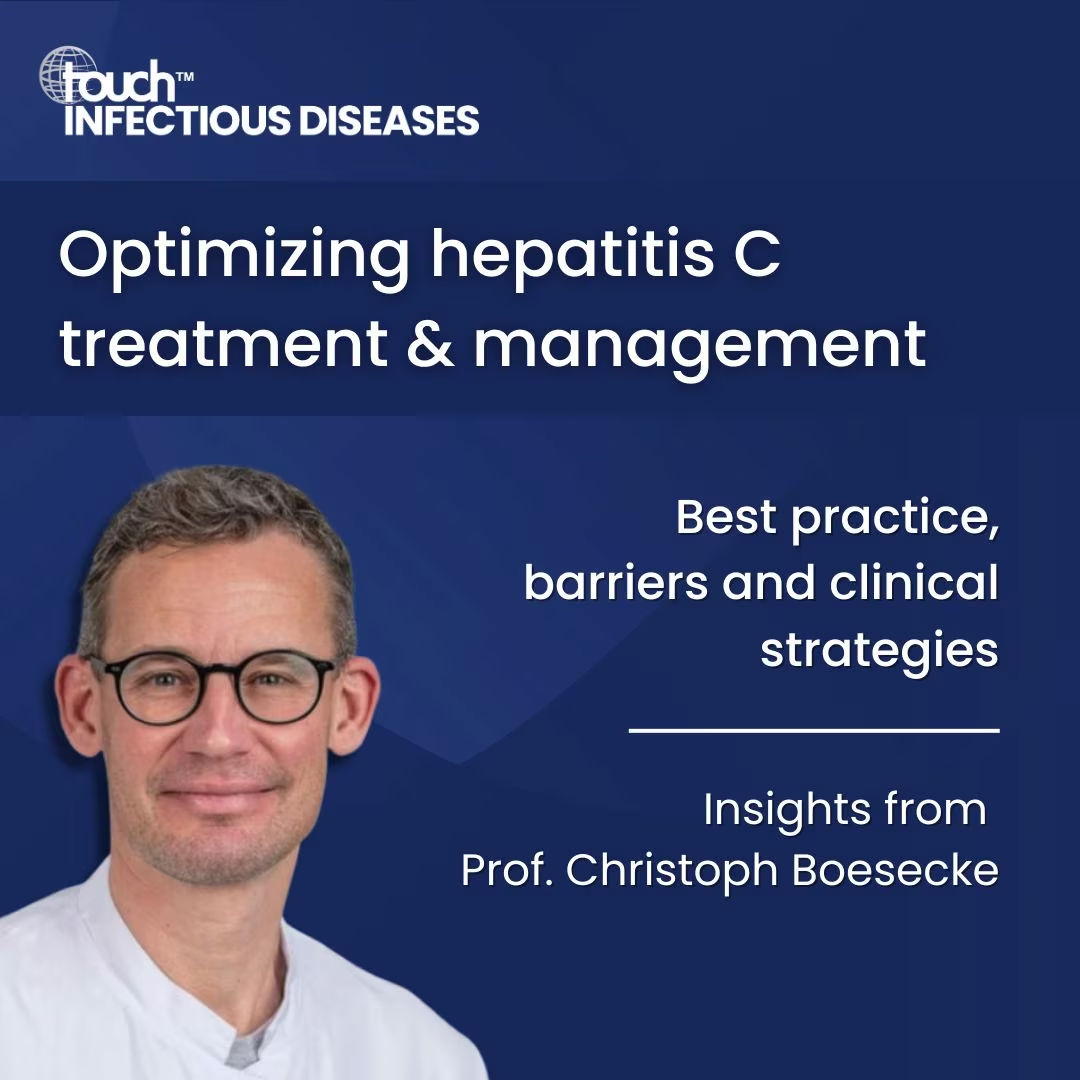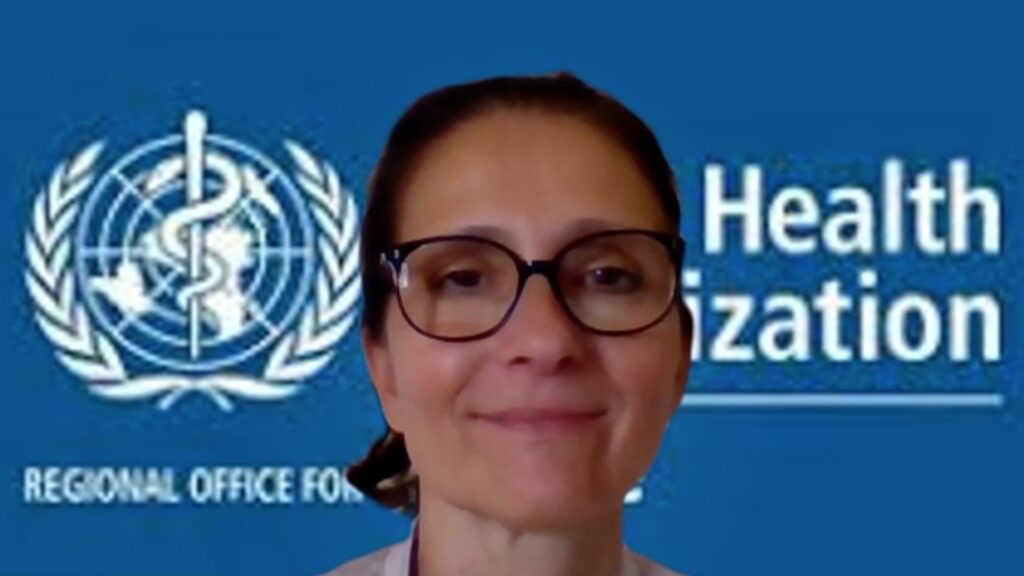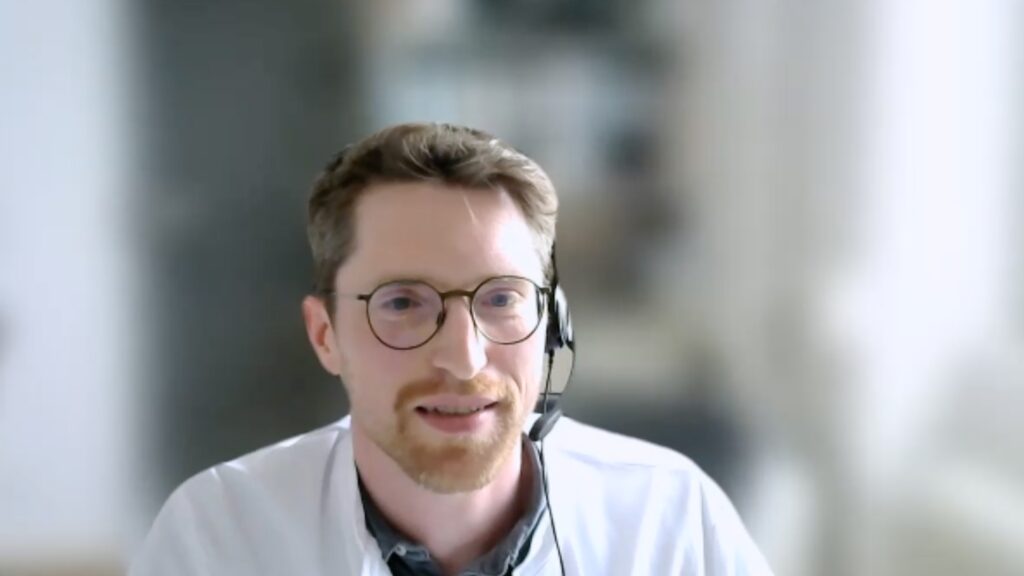
Hepatitis C virus (HCV) remains a major public health challenge, despite the availability of highly effective treatments. In this expert Q&A, Prof. Christoph Boesecke, an infectious diseases specialist at the University Hospital Bonn, Germany, joins us for an educational discussion and insights on the current landscape of HCV care.
Prof. Boesecke discusses standard treatment protocols, challenges related to diagnosis and reinfection, as well as strategies for improving treatment adherence in high-risk populations. This conversation provides valuable perspectives on the remaining hurdles and potential innovations in the management of HCV.
The standard of care for HCV in Europe is essentially universal. I often refer to the EACS Guidelines, which are also available as an app, with an excellent summary table of treatment options.1 In essence, treatment involves a co-formulation of two drugs taken once daily, with one to three pills over eight to twelve weeks, leading to complete eradication of HCV.
Firstly, the biggest barriers to universal treatment that remain are with gaps in testing. Not everyone who is infected with HCV is aware of their diagnosis. In Germany, we have integrated testing for hepatitis B and C into the general health check-up available from age 35, which has identified many undiagnosed cases. This often includes individuals outside the traditional high-risk groups, such as older adults who underwent surgery or blood transfusions in the 1980s or 1990s without subsequent hepatitis screening.
The second barrier relates to cost. HCV treatments remain expensive, with prices varying based on healthcare system negotiations. Additionally, there is a minor challenge related to drug labelling. Up until a few weeks ago current licences were only for chronic HCV, so prescribing for recently acquired infections, previously classified as acute HCV, was technically off-label. However, clinical guidelines are evolving to address this, and a labelling update for one combination treatment has been accepted by the FDA recently.2
HCV treatment is remarkably straightforward and requires minimal support to achieve a cure. For example, many people who inject drugs are already engaged with healthcare services through opioid substitution therapy, which allows for observed daily dosing if needed.
For other populations, adherence is facilitated by the simplicity of the regimen: one to three pills once daily. The drugs are well tolerated with minimal side effects, eliminating the need for intensive monitoring during treatment. Typically, patients can be asked to return only after completing therapy to confirm virological cure.
This is actually also very straightforward. Treatment recommendations are identical for patients with or without HIV co-infection, with no differences regarding genotype, choice of regimen or treatment duration. The main consideration is checking for drug–drug interactions, particularly in patients taking other chronic medications. Fortunately, most people living with HIV are on integrase inhibitor-based regimens, which rarely interact with HCV treatments.
For patients with cirrhosis, particularly if it is decompensated, treatment requires a look into the guideline recommendations.1 In some cases, extending the duration of treatment or adding ribavirin may be necessary.
No new DAAs are anticipated, but that is acceptable and not a concern, as current medications are highly effective and pangenotypic, meaning they work across all HCV genotypes. Treatment resistance is extremely rare. I cannot recall the last time I needed to conduct resistance testing for HCV treatment.
Reinfection is a separate issue. Curing one infection does not provide immunity against future infections. Addressing reinfection relies entirely on prevention strategies, understanding and mitigating the patient’s risk factors, such as intravenous drug use or engagement in high-risk sexual activities.
There are no forthcoming new treatments globally, which is perfectly fine given the excellent efficacy of current therapies. The key piece missing in the fight against HCV, is a vaccine. Research in this area continues but was delayed by the COVID-19 pandemic. However, advances in mRNA technology, familiar to many from COVID-19 vaccines, may accelerate HCV vaccine development. This would be the most exciting development and could be transformative for global HCV elimination efforts.
Key Takeaways:
- HCV treatment is simple, effective, but testing gaps and high costs hinder universal access.
- Integrating care into existing services improves adherence, with minimal follow-up.
- Reinfection risk remains high, and vaccine development is vital to achieving HCV elimination.
References:
- EACS. EACS Guidelines 2024. 2024. Available at: https://eacs.sanfordguide.com/ (accessed 10 July 2025).
- Abbvie. U.S. FDA Approves Expanded Indication for AbbVie’s MAVYRET® (Glecaprevir/Pibrentasvir) as First and Only Treatment for People with Acute Hepatitis C Virus. 2025. Available at: https://news.abbvie.com/2025-06-11-U-S-FDA-Approves-Expanded-Indication-for-AbbVies-MAVYRET-R-Glecaprevir-Pibrentasvir-as-First-and-Only-Treatment-for-People-with-Acute-Hepatitis-C-Virus (accessed 10 July 2025).
Disclosures: Christoph Boesecke has received honoraria for lectures and/or consultancies from AbbVie, Astra Zeneca, Bavarian Nordic, Gilead, Janssen, MSD, Pfizer, ViiV as well as institutional funding from DFG, Dt. Leberstiftung, DZIF, Hector Stiftung, NEAT ID. No funding was received in the publication of this article.
Cite: Optimizing hepatitis C treatment and management: Best practice, barriers and clinical strategies. touchINFECTIOUS DISEASES. 1 July 2025.
Editor: Katey Gabrysch, Editorial Director
Register now to receive the touchINFECTIOUS DISEASES newsletter!
Don’t miss out on hearing about our latest peer reviewed articles, expert opinions, conference news, podcasts and more.












